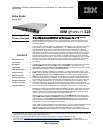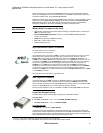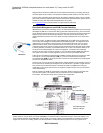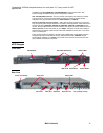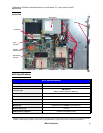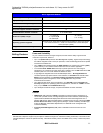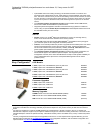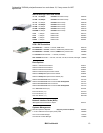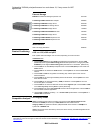
posted a floating-point score that was 41% better than that of the Xeon-based HP DL360 G3
server, and at a slightly lower cost. The same e325 score was 63% of that posted by the Itanium
2-based HP rx2600 server, but at one-seventh the cost!
In short: Compared to the x335, the e325 is faster (faster processor for integer operations, faster
DDR memory), has greater memory capacity, and it offers the ability to run both 32-bit and
64-bit applications concurrently. When running a 64-bit operating system, the e325 breaks
through the “4GB barrier” for memory addressing imposed by 32-bit processors.
Large Disk Storage Capacity
The e325 offers a choice of disk storage, supporting up to two internal HDDs:
Hot-swap SCSI
y Ultra320, 10,000 RPMs — 36.4, 73.4 or 146.8GB (293.6GB maximum)
y Ultra320, 15,000 RPMs — 36.4 or 73.4GB (146.8GB)
Fixed IDE
(ATA-100)
y 7,200 RPM — 40, 60, 80 or 120GB (240GB)
The SCSI drives are hot-swappable, while the IDE drives are not. If the customer needs more
storage space, terabyte capacities are possible with external IBM ServeRAID SCSI or IBM FAStT
Fibre Channel storage solutions. The Ultra320 SCSI hot-swap drives use the Converged Tray for
interchangeability with xSeries systems and FAStT expansion units.
DDR Chipkill ECC Memory
The e325 supports up to 12GB
4
of memory in six DIMM sockets. It uses registered PC2700
double data rate (DDR) two-way interleaved memory (operating at 333MHz) for faster access,
and incorporates the same renowned IBM Chipkill ECC technology used in more expensive IBM
servers, for up to 16X better error correction than standard ECC memory.
Memory must be installed in pairs. It is available in 512MB and 1GB (2GB DIMMs are planned).
High-Performance Opteron Processors
The e325 offers a choice of processors:
y AMD Opteron 240, 242 and 246
The integrated memory controller and 1MB of L2 cache run at the full processor clock rate, not the
stepped down rate of the front-side bus (FSB) used in Intel processors. Because of this, the
Opteron 246’s Hyper Transport Tunnel offers peak throughput of 16.0GB per second vs. only
6.4GBps for the (1.5GHz) Itanium’s front-side bus (FSB) — up to 250% faster than Itanium 2, and
a maximum of 4.26GBps for the (3.06GHz) Xeon’s FSB (up to 375% faster than Xeon). Similarly,
the maximum aggregate peak memory throughput of the Opteron in a 2-way configuration is
10.6GBps, or up to 250% higher throughput than the peak rate of 4.26GBps provided by the
533MHz FSB of the Intel Xeon processor used in the x335, and up to 24% more than the 8.5GBps
of the Itanium 2. I/O performance is equally strong, with the Opteron supporting a peak I/O
bandwidth of 12.8GBps, or up to 50% more than the Itanium’s 6.4GBps maximum, and up to 400%
of the 3.2GBps of the Xeon.
The e325 ships with one processor, upgradable to two.
What’s New? (Compared to the x335)
y AMD Opteron processors with HyperTransport technology, integrated memory controller and
1MB of L2 processor cache
y PC2700 333MHz DDR Chipkill ECC memory (vs. PC2100 266MHz DDR Chipkill ECC
memory for the x335)
y 12GB memory capacity (vs. 8MB for the x335)
y Four USB 1.1 ports (2 front, 2 rear)
y Optional USB floppy drive
Key Features
Outstanding 32/64-bit price/performance in a rack-dense 1U, 2-way server for HPC
applications
IBM Confidential 2.
4
In a 2-way configuration, using 2GB DIMMs. See the e325 system specifications table for details.
August 11, 2003. Price comparisons using public web prices as of July 28, 2003.



